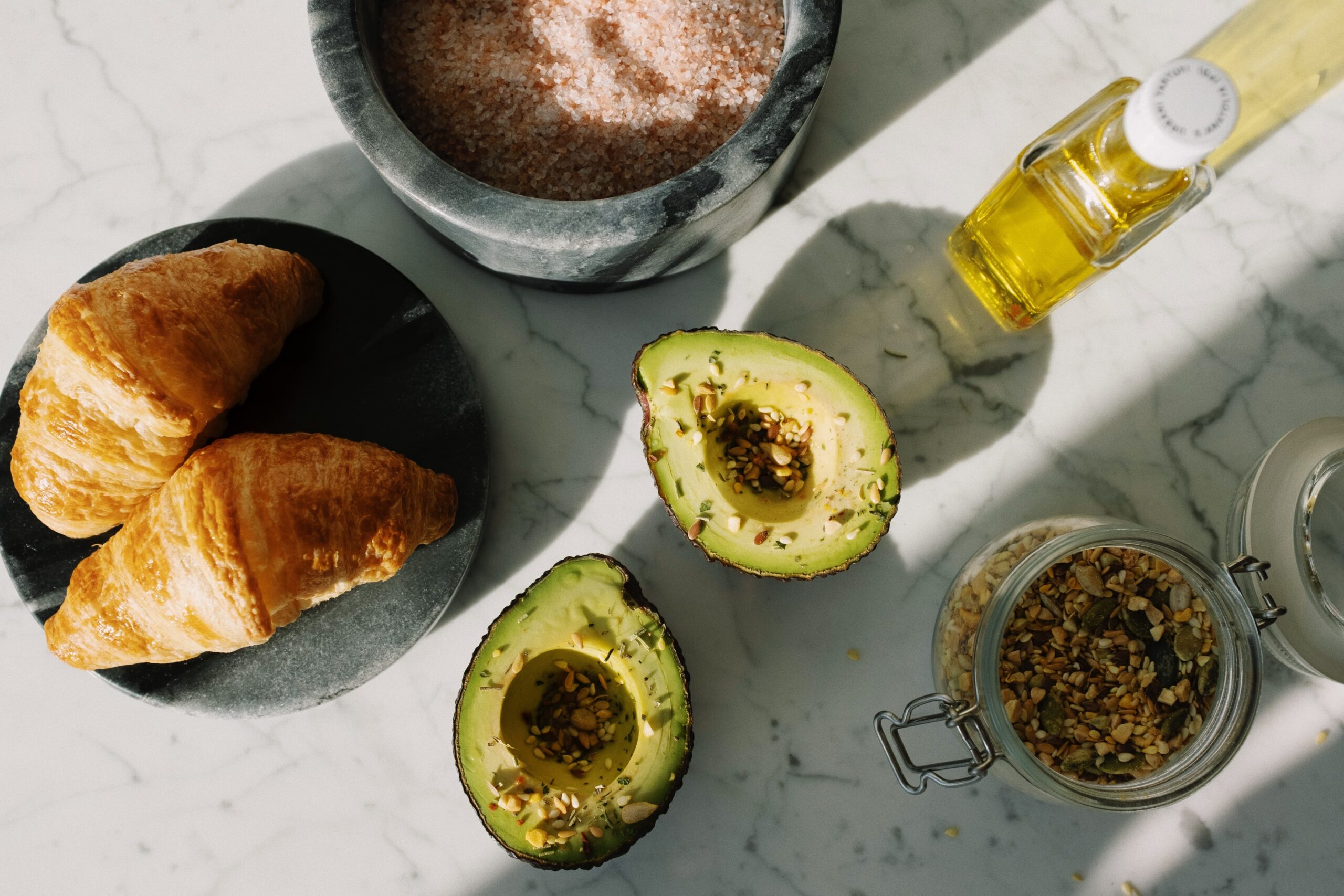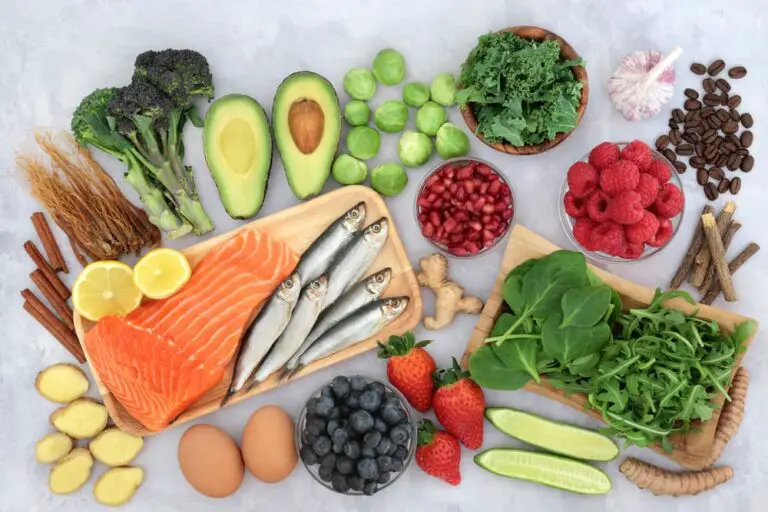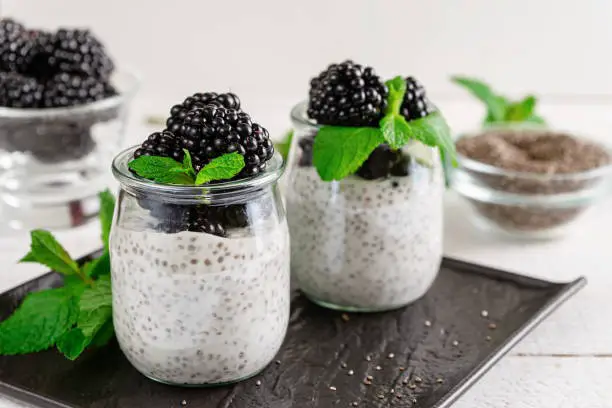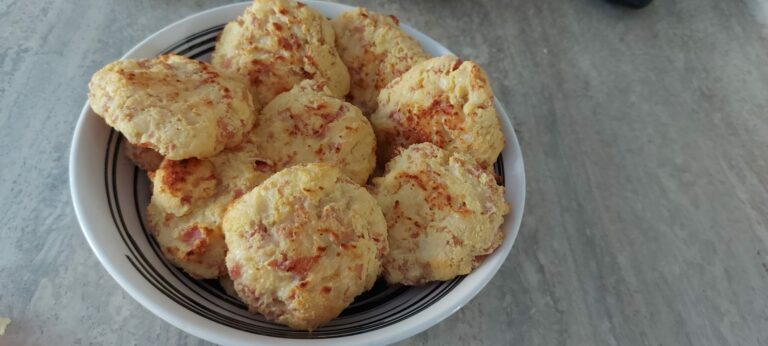Coconut Oil vs. Avocado Oil

Coconut and avocado are two of the most popular and debated choices in natural oils. Both revered for their culinary and cosmetic benefits, these oils have graced kitchen shelves and beauty cabinets. But as health-conscious consumers, how do we navigate the sea of information and decide which reigns supreme?
This article delves into both oils’ uses, production methods, nutritional profiles, and advantages and disadvantages. Whether you’re a chef wondering which oil to drizzle over your dish or someone looking to enhance their skincare routine, this guide offers insights to help you make an informed choice. Dive in to unravel the mystique of coconut and avocado oils and determine the best fit for your needs.
Coconut Oil

Coconut Oil: Derived from the meat or kernel of mature coconuts. There are two main types:
Virgin (unrefined): Cold-pressed and extracted from the coconut without heat.
Refined: Processed with heat or chemicals to increase shelf life and neutralize the coconut taste.
Nutritional Facts (per tablespoon)
Calories: ~120
Fat: ~14g (of which about 90% is saturated fat)
Vitamins/Minerals: Minimal
Pros:
It can boost good cholesterol (HDL).
Contains MCTs which can be used as a quick source of energy.
Natural moisturizer for skin and hair.
Cons:
High saturated fat can be concerning for heart health if consumed in large amounts.
Lower smoke points in unrefined form can make it unsuitable for high-heat cooking.
Uses of Coconut Oil
1. Cooking: especially in Southeast Asian cuisines.
Southeast Asian Coconut Lime Chicken

This delicious chicken dish is inspired by the rich and aromatic flavors of Southeast Asian cuisines, particularly Thai and Indonesian. The blend of coconut oil with tangy lime juice creates a luscious sauce that complements the tender chicken pieces.
Ingredients:
- 4 boneless, skinless chicken breasts or thighs cut into bite-sized pieces
- 2 tbsp coconut oil
- 4 garlic cloves, minced
- 1 medium-sized onion, finely sliced
- 2 tbsp grated ginger
- 2 bird’s eye chilies (adjust to taste), finely chopped
- Zest and juice of 2 limes
- 400 ml canned coconut milk
- 2 tbsp fish sauce (or to taste)
- 1 tsp brown sugar or palm sugar
- 1 stalk lemongrass, bruised
- A handful of fresh coriander (cilantro), chopped
- A handful of fresh basil leaves
- Salt to taste
Instructions:
- Preparation: Begin by prepping all your ingredients. This means slicing your onions, mincing garlic and ginger, chopping chilies, and cutting the chicken.
- Sauté Base Ingredients: Heat coconut oil over medium heat in a large skillet or pan. Once hot, add the onions and sauté until translucent. Add the garlic, ginger, bird’s eye chilies, and lime zest. Sauté for another 2-3 minutes until fragrant.
- Brown the Chicken: Add the chicken pieces to the pan. Cook until they are browned on all sides.
- Add Coconut Milk: Pour in the coconut milk, ensuring that it covers the chicken. Add the bruised lemongrass stalk.
- Flavor the Sauce: Stir in the fish sauce and brown sugar/palm sugar. Let the mixture simmer gently for about 15-20 minutes, allowing the chicken to cook thoroughly and the flavors to meld. Add a little water to adjust the consistency if the sauce thickens too much.
- Add Lime Juice and Herbs: Add lime juice once the chicken is cooked. Taste and adjust the seasoning with more salt or fish sauce if required.
- Finish with Fresh Herbs: Just before serving, stir in the fresh coriander and basil leaves.
- Serve: Remove the lemongrass stalk, and serve the coconut lime chicken hot with steamed jasmine rice or noodles.
- Optional: Garnish with additional chili slices, lime wedges, and a sprinkle of fresh herbs.
2. Baking: commonly used as a dairy-free alternative to butter.
Coconut Oil Banana Bread

Coconut oil gives banana bread a slightly tropical twist, making it even more moist and delicious. Here’s a simple and tasty recipe for you:
Ingredients:
- 3 ripe bananas, mashed
- 2 cups all-purpose flour
- 1 tsp baking soda
- 1/4 tsp salt
- 1/2 cup virgin coconut oil, melted
- 3/4 cup granulated sugar (or coconut sugar for a deeper flavor)
- 2 large eggs, beaten
- 1 tsp pure vanilla extract
- 1/2 cup chopped walnuts or pecans (optional)
- 1/2 cup shredded coconut (optional for added texture and flavor)
Instructions:
- Preheat Oven: Set your oven to 350°F (175°C). Grease a 9×5-inch loaf pan or line it with parchment paper.
- Dry Ingredients: In a large mixing bowl, sift together the all-purpose flour, baking soda, and salt. If you’re using nuts and shredded coconut, toss them in the flour mixture to coat (this prevents them from sinking to the bottom).
- Mash Bananas: In another bowl, mash the ripe bananas until smooth.
- Wet Ingredients: Mix the melted coconut oil with the bananas. Then, stir in the sugar, beaten eggs, and vanilla extract. Mix until smooth.
- Combine: Gradually add the dry ingredients to the wet ingredients. Gently fold until just combined. Avoid overmixing, as this can result in denser bread.
- Pour and Bake: Pour the batter into the prepared loaf pan. Smooth the top with a spatula. Bake in the oven for 60-70 minutes or until a toothpick inserted into the center comes out clean.
- Cool: Once baked, remove the banana bread from the oven and let it cool in the pan for about 10 minutes. Afterward, transfer it to a wire rack to cool completely.
- Serve: Slice the cooled banana bread and enjoy with a butter spread or as is!
Notes: You can replace half of the all-purpose flour with whole wheat flour for a healthier version. Coconut oil can be a direct substitute for butter or other oils in most baking recipes, so feel free to experiment with it in other dishes too!
3. Hair and skin care: moisturizer, hair mask, etc.
Coconut Oil Hair Mask
Coconut oil is renowned for its deep moisturizing properties and is a popular choice for hair treatments. This simple hair mask using coconut oil will nourish and strengthen your hair, giving it a shiny, silky feel.
Ingredients:
- 2-3 tbsp virgin coconut oil (adjust depending on hair length and thickness)
- 1 tbsp honey (for added moisture and shine)
- 1 egg (rich in proteins and vitamins, great for hair strength)
- 1 tbsp yogurt (optional for added hydration and a smoother texture)
- 1 tsp lemon juice (optional; it can help with dandruff issues)
Instructions:
- Preparation: Ensure your coconut oil is in a liquid state. If it’s solid, you can gently warm it until it melts. Be sure it’s not too hot before applying to your hair.
- Mix Ingredients: In a mixing bowl, combine the coconut oil, honey, and the contents of one egg. Mix until well combined. If you’re using yogurt, add it now. Add lemon juice if you’re concerned about dandruff or want a slightly clarifying effect.
- Application: Wet your hair slightly (it helps in the even application of the mask). Begin by sectioning your hair and applying the mask from roots to tips. Ensure every strand is covered.
- Massage: Once your hair is fully covered with the mixture, massage your scalp gently for about 5 minutes. This will help in blood circulation and better absorption of the mask.
- Wait: After applying the mask, cover your hair with a shower cap or wrap a towel around it. Let the mask sit for at least 30 minutes. However, if you have more time, you can leave it on for up to an hour for deeper conditioning.
- Wash: Rinse out the mask with lukewarm water (not hot). Then, shampoo your hair as you usually would. Depending on your hair type, you might find that you don’t need to condition after using the mask since coconut oil is a great conditioner.
- Dry and Style: Allow your hair to air dry or style.
Notes: This mask is suitable for all hair types. However, how often you should use it varies. For dry hair, you can apply this mask once a week. For oily hair, once every 2-3 weeks should suffice. If you are allergic to any ingredients, please avoid using them or conduct a patch test before full application.
4. Oil pulling: an ancient practice for dental health.
Coconut Oil Pulling for Dental Health
Oil pulling is an ancient Ayurvedic technique believed to detoxify the body and improve oral health. Coconut oil is particularly popular because of its pleasant taste and antimicrobial properties. Here’s how to do coconut oil pulling for dental health:
Ingredients:
1-2 tablespoons of virgin coconut oil (organic is preferable)
Procedure:
- Choose the Right Time: It’s often recommended to do oil pulling on an empty stomach first thing in the morning. However, you can do it at any time of the day if you haven’t eaten in the last 4 hours.
- Measure the Oil: Start with 1 tablespoon of coconut oil. If you feel that’s too much or too little, you can adjust the amount to what feels comfortable.
- Swish in Your Mouth: Place the coconut oil in your mouth. If it’s solid, allow it to melt in your mouth and swish it around. Pull the oil through your teeth and around all areas of your mouth.
- Duration: Aim to swish the oil in your mouth for 15-20 minutes. If you’re starting, you might want to begin with 5 minutes and gradually increase the duration over time.
- Do Not Gargle or Swallow: It’s essential not to swallow the oil, as it’s filled with bacteria and toxins from your mouth. Also, avoid gargling, as you don’t want the oil to reach your throat.
- Spit Out: Spit the oil into a trash can once you’re done. Avoid spitting it into sinks or toilets as the oil can solidify and cause blockages.
- Rinse Your Mouth: Rinse thoroughly with warm water to remove residual oil. Swishing with warm salt water can also help in further cleansing.
- Brush Your Teeth: After rinsing, brush your teeth as usual.
Benefits:
- Oral Hygiene: Oil pulling can help in reducing the number of harmful bacteria in the mouth. Regular practice might help in reducing plaque and the risk of gingivitis.
- Whiter Teeth: Some claim oil pulling has helped them achieve whiter teeth.
- Fresh Breath: By reducing the bacterial load, oil pulling can also combat bad breath.
- Improved Gum Health: Coconut oil has anti-inflammatory properties, which might help improve gum health.
Precautions:
- While many people find oil-pulling beneficial, it shouldn’t replace regular dental care practices like brushing, flossing, and regular check-ups.
- Some individuals may be allergic to coconut oil. If you experience any irritation, stop the practice and consult a healthcare professional.
- If you have any dental concerns or pre-existing conditions, consult with a dentist before starting oil pulling.
With consistent practice, oil pulling can be a supplemental technique to help maintain your oral health. However, it’s essential to continue with regular dental check-ups and daily oral hygiene practices.
Avocado Oil

Avocado Oil: Extracted from the flesh of the avocado fruit.
Cold-pressed: Best quality as it retains most of the natural flavor and nutritional benefits.
Refined: Processed to have a higher smoke point and a more neutral flavor.
Nutritional Facts (per tablespoon)
Calories: ~124
Fat: ~14g (of which about 10% is saturated fat, 70% monounsaturated fat)
Vitamins/Minerals: Contains vitamin E and potassium.
Pros:
High in monounsaturated fats which are heart-healthy.
High smoke point, making it versatile for cooking.
Contains antioxidants like lutein.
Cons:
It can be more expensive than other cooking oils.
Not as widely available in all markets.
Uses of Avocado Oil
1. Cooking: for grilling, frying, sautéing, and baking.
2. Salad dressings: due to its mild and nutty flavor.
Avocado Oil Salad Dressing
Ingredients:
- 1/2 cup avocado oil
- 3 tablespoons apple cider vinegar (or lemon juice)
- 1 tablespoon Dijon mustard
- 1 garlic clove, minced
- 1 teaspoon honey or maple syrup (adjust to taste)
- Salt and pepper, to taste
- Optional: fresh herbs such as parsley, basil, or chives, finely chopped
Instructions
- Mix Wet Ingredients: In a small bowl, combine the apple cider vinegar (or lemon juice), Dijon mustard, minced garlic, and honey or maple syrup.
- Whisk in the Oil: Slowly drizzle in the avocado oil while continuously whisking. This will help emulsify the dressing, giving it a smooth and slightly thickened consistency.
- Season: Add salt and pepper to taste. If you’re using fresh herbs, fold them in now.
- Taste and Adjust: Give your dressing a quick bite and adjust any ingredients as needed. Add more vinegar or lemon juice if you like it tangier. If you want it sweeter, add more honey or maple syrup.
- Store: Pour the dressing into a jar with a tight-fitting lid. It can be stored in the refrigerator for up to a week. The oil might solidify slightly in the cold, so let the dressing sit at room temperature for a few minutes and give it a good shake or stir before using.
- Serve: Drizzle over your favorite salads, roasted vegetables, or grilled meats. Enjoy!
Note: Avocado oil has a smooth, buttery flavor that pairs wonderfully with the tang of apple cider vinegar or lemon juice. If you want to experiment, add ingredients like finely chopped shallots, a dash of soy sauce, or even a bit of grated Parmesan cheese to change the flavor profile.
3. Skincare: found in creams and lotions due to its hydrating properties.
Gentle cream for hands and body. Shea butter nourishes and moisturizes dry, chapped skin, giving a silky smooth texture.

4. Hair care: hair masks and serums.
Majestic Pure Avocado Hair Mask is crafted with beneficial ingredients such as Shea Butter, Coconut Oil, Avocado Oil, and Biotin to promote thicker-looking, visibly shinier hair. I. It is great for dry, damaged, and chemically treated hair, making hair softer and more manageable. Deep conditioning and hair thickening formula for all hair types.

Which Oil Is Better For Weight Loss: Coconut Or Avocado?
Both oils contain similar calorie counts per tablespoon (~120 calories), so neither has a distinct advantage regarding calorie content. The difference lies in the type of fats. While coconut oil contains medium-chain triglycerides (MCTs), often touted for weight loss benefits, it’s also high in saturated fats. On the other hand, avocado oil is rich in monounsaturated fats, which can benefit heart health. Consuming both in moderation is essential as a part of a balanced diet.
Which is Better for Cooking?
This depends on the type of cooking:
- High Heat Cooking (frying, grilling): Avocado oil is preferable due to its higher smoke point.
- Medium to Low Heat Cooking (sautéing, baking): Both can be used, but choose refined coconut oil if you want a neutral flavor or virgin coconut oil for a coconutty taste.
Conclusion:
Both coconut and avocado oil have their places in the kitchen and personal care. Their choice depends on the intended use, flavor preference, and health considerations. Always consult a nutritionist or healthcare provider if making choices based on specific health needs.

Me encanta cocinar y escribir, tengo un Certificado de Nutrición de Inicio y un diploma de Nutrición Completa acreditado por CTAA y una Certificación de Entrenador de Salud de Nutrición Keto. Creo firmemente que comer sano es la clave para vivir una mejor calidad de vida. He tomado un curso de Terapia Nutricional que me ha dado las bases para comer saludablemente.







